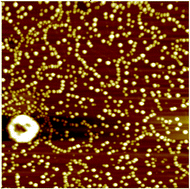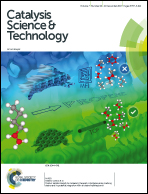Cobalt and cobalt carbide on alumina/NiAl(110) as model catalysts
Abstract
Cobalt is an important catalyst for Fischer–Tropsch synthesis, and it can form cobalt carbide under syngas (CO + H2) reaction conditions, especially in CO-rich mixtures. As cobalt carbide has been credited as a promoter which brings about significant selectivity changes in CO hydrogenation, we are interested in studying it using a surface science approach, to understand its interaction with important reaction intermediates. In the present study, we use a NiAl(110) surface to produce a flat alumina film and prepare cobalt and cobalt carbide thereon. We find that cobalt is thermally stable up to 800 K on alumina/NiAl(110). Different preparation temperatures result in different morphologies of the surface. Cobalt carbide is obtained by evaporating cobalt in an C2H4 environment, as proved by the appearance of a C 1s peak at 283.3 eV of carbidic carbon and at 286.2 eV of chemisorbed CO on cobalt carbide in the XPS spectra. Large cobalt carbide crystals with a typical size of 100 nm × 50 nm are revealed by STM. The results show that cobalt and cobalt carbide on alumina/NiAl(110) can serve as suitable model systems for studying structures, adsorption and catalytic properties.



 Please wait while we load your content...
Please wait while we load your content...